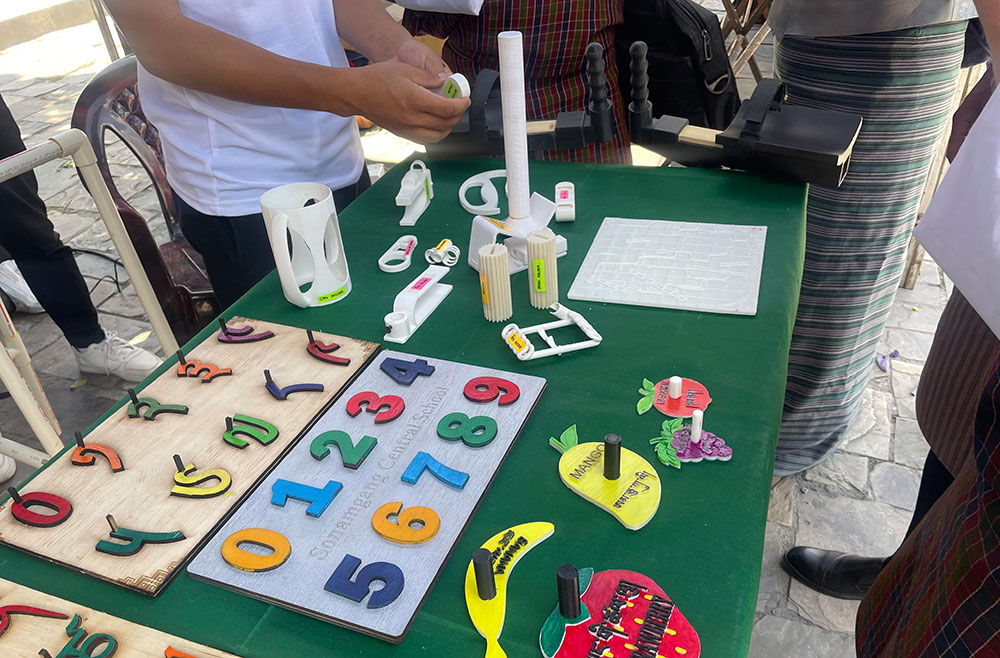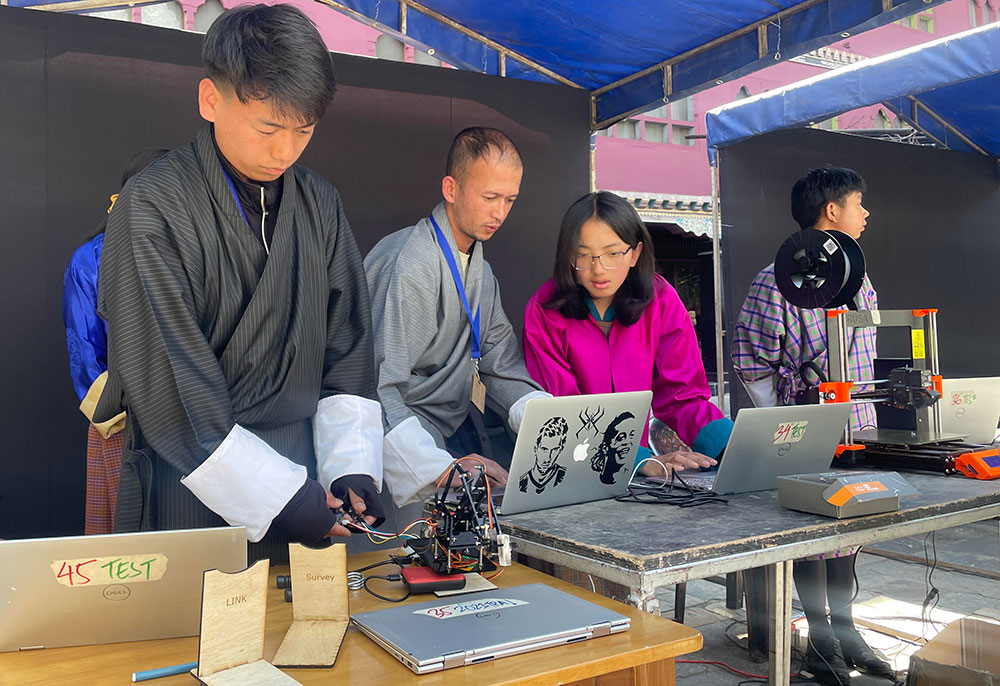Sherab Lhamo
Six Fab Labs from across the country showcased their assistive technology projects using advanced technology at the Fab Fest held on May 23 at the Clock Tower, Thimphu. The theme for this year’s event was “Assistive Technology: Building Accessibility, Inclusivity, and Independence.”
Assistive technology (AT) are tools that let people with differences work around challenges. They make tasks and activities accessible at school, work, and home.
The event aimed to inspire solutions and highlight projects that foster accessibility and improve the lives of people with disabilities.
The College of Science and Technology’s (CST) Fab Lab has developed assistive devices to aid in teaching and learning.

Students used a 3D printer to create assistive devices to help people with limited hand strength
Students used a 3D printer to create assistive devices, such as pen and cup holders, to help people with limited hand strength who must rely on their arms or wrists for gripping.
They have also created a new learning tool: an alphabet board for primary school children. The board allows children to insert 3D Dzongkha and English letters. Additionally, they also created weatherboard where weather inserts can be displayed, and an emotions board.
Kamal Chapagai,one of the members, said that they used a 3D printer and laser cuts to create these products based on each child’s preference after they interviewed those persons with disabilities.
Jigme Namgyal Super Fab Lab (JNSFL) presented their devices that also used 3D printers and laser cut.
They have created a Hand Gesture controlled robotic arm for those with physical disability and elderly individuals; these devices help with everyday tasks, like picking things up, all while working seamlessly with the hand gestures. Easing their daily tasks such as fetching items, opening doors, and others.
The hand gestures are recognised by the sensors, through a wireless control glove interface. A bluetooth low energy helps to simplify wireless communication and the program can be customised for various tasks.
The team also created an app called “eSpeak” that features icons for various tasks, from greetings to everyday requests. Users can simply click the desired icon—corresponding audio message will be played in Dzongkha.
For instance, to say good morning, a user would select the greeting icon, and a voice would say “Kuzuzangpo La!”
The team is working on future iterations that will allow for even greater functionality, such as voice and sentence input by users. Which will be launched very soon to the public.
Another group from CST created an affordable Braille system in both dual languages —English and Dzongkha. Using their system and typing out what they want, it wirelessly gets connected with the Braille printer which prints out the words and letters.
Gyembo Tshering, one of the members, said the group presented the same project in FAB23 last year. This year, they have modified the device enabling users to use it in two languages and print the word in Braille paper and A4 size paper, which they could not in the past.
Gyembo said that they have made three Braille devices, which they plan to distribute for free to Draktsho School and Muenselling Institute soon. They also plan to distribute to other schools for educational purposes.
Technical Trainers Training Resource Centre (TTTRC) Fablab in Sarpang created a smart stick, smart head torch like gear, and smart wrist which helps blind people detect things in front of them with a buzzer. Whenever that individual comes across an object in front of them they can hear a buzzer.
Yeshi Phuntsho, one of the members said this device enables blind people to detect object in front of them without having to feel with their stick.
The participants in Fab fest were Jigme Namgyel Wangchuck Super Fab Lab, College of Science and Technology Fab Lab, College of Natural Resources Bio-Fab Lab, Technical Trainers Training Resource Centre Fab Lab, Choego Fab Lab, and Druk Gyalpo Institute Fab Lab.
Four Class IX students from The Royal Academy created affordable Radio telescope prototype. One of the group members, Kinley Tsheyang Seldon, said their technology was used for detecting radiation from stars.
She said that stars had certain radio waves at certain stages of their life. After it receives the radio waves, through a program they created feeds into the system and displays an image of the radio waves.
Team plans to finish their Radio telescope’s back end side and share it with other schools.
Sonam Wangchuk from Royal Academy built a robotic arm, which can pick objects using a joystick and sensors. Using the sensors, it can help detect where the objects are.
He said the design was done by his seniors, using that design he coded and created the robotic arm with the help of ChatGPT. He shared that though ChatGPT helps to create the code but it is not accurate. He modified it himself based on the requirements.
He plans to make the robotic arm moveable in all directions.


